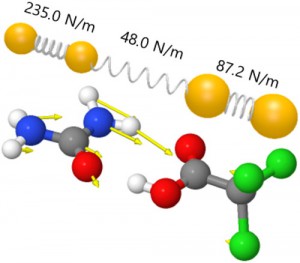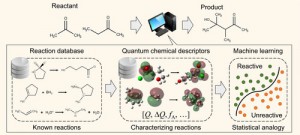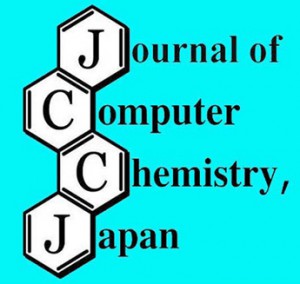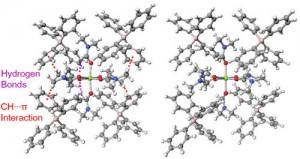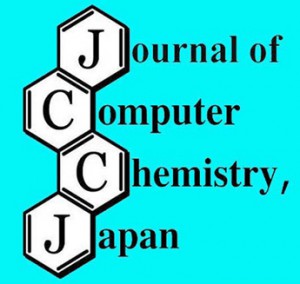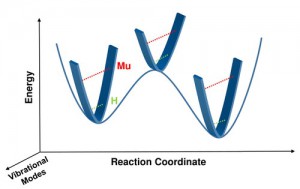[Published online Journal of Computer Chemistry, Japan Vol.15, 60-62, by J-STAGE]
<Title:> ホモ/ヘテロダイマー系分子間振動の粗視化による分子間/分子内剛性の定量化
<Author(s):> 磯貝 実, 北條 博彦
<Corresponding author E-Mill:> houjou(at)iis.u-tokyo.ac.jp
<Abstract:> We have developed a method for quantifying the intermolecular forces in supramolecular systems by modifying our original method of coarse-graining intermolecular vibrations. We evaluated the true and apparent intermolecular stiffness constants for 21 dimers composed of formic acid-, acetic acid-, trichloroacetic acid-, formamide-, formamidine- or urea-monomer. In this method, the atomic displacement vectors of a dimer were projected onto a subspace spanned by bases corresponding to 12 relative translational and rotational motions and several intramolecular vibrations that are coupled with intermolecular vibrations. The intermolecular stiffness constants showed moderate linearity with the corresponding dimerization energies. The apparent stiffness constant can be explained by a mechanical model using inter- and intramolecular stiffness constants of the constituent monomers.
<Keywords:> Intermolecular forces, Normal mode analysis, Coarse graining, Principal component analysis, Hydrogen bond, Terahertz spectroscopy
<URL:> https://www.jstage.jst.go.jp/article/jccj/15/3/15_2016-0039/_article/-char/ja/
<Title:> ホモ/ヘテロダイマー系分子間振動の粗視化による分子間/分子内剛性の定量化
<Author(s):> 磯貝 実, 北條 博彦
<Corresponding author E-Mill:> houjou(at)iis.u-tokyo.ac.jp
<Abstract:> We have developed a method for quantifying the intermolecular forces in supramolecular systems by modifying our original method of coarse-graining intermolecular vibrations. We evaluated the true and apparent intermolecular stiffness constants for 21 dimers composed of formic acid-, acetic acid-, trichloroacetic acid-, formamide-, formamidine- or urea-monomer. In this method, the atomic displacement vectors of a dimer were projected onto a subspace spanned by bases corresponding to 12 relative translational and rotational motions and several intramolecular vibrations that are coupled with intermolecular vibrations. The intermolecular stiffness constants showed moderate linearity with the corresponding dimerization energies. The apparent stiffness constant can be explained by a mechanical model using inter- and intramolecular stiffness constants of the constituent monomers.
<Keywords:> Intermolecular forces, Normal mode analysis, Coarse graining, Principal component analysis, Hydrogen bond, Terahertz spectroscopy
<URL:> https://www.jstage.jst.go.jp/article/jccj/15/3/15_2016-0039/_article/-char/ja/
